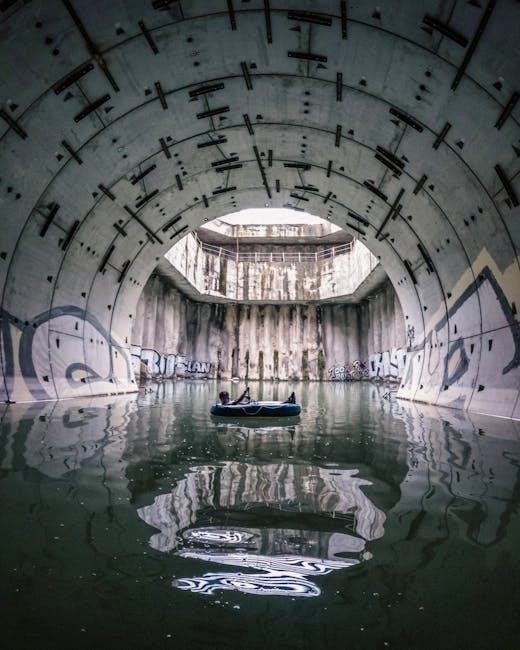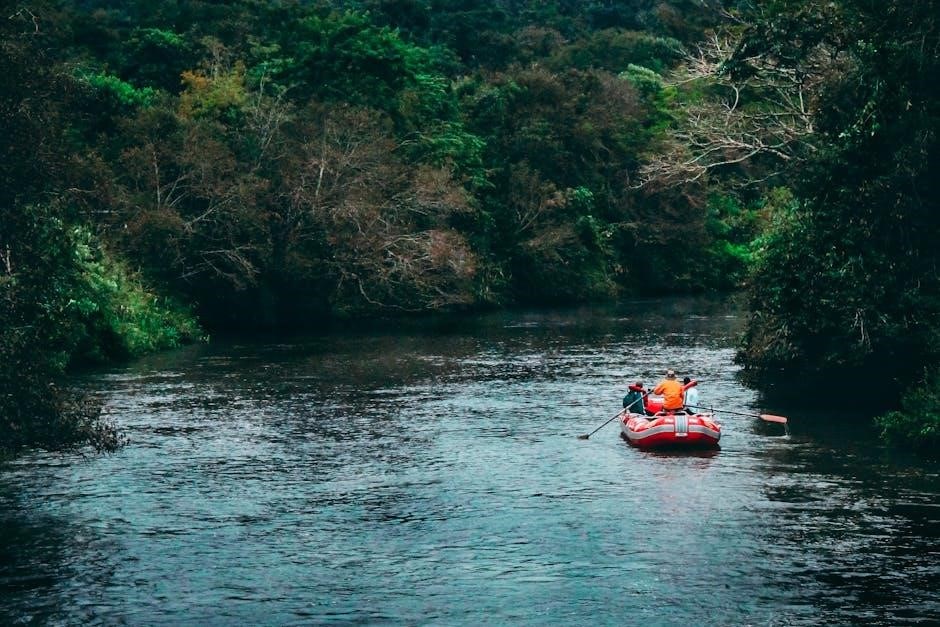
how much to tip a raft guide
Tipping raft guides is a customary way to express appreciation for their expertise and service during your adventure. It reflects satisfaction with the experience and is a key part of their income in the service-based industry. The amount varies based on trip duration, difficulty, and guide performance, making it a personalized gesture of gratitude.
Understanding the Importance of Tipping in the Rafting Industry
Tipping raft guides is a crucial aspect of the rafting industry, as it directly reflects customer satisfaction and appreciation for the guide’s expertise and service. Raft guides often rely on tips as a significant portion of their income, especially since many work on a seasonal or freelance basis. Tipping demonstrates gratitude for their hard work in ensuring a safe, enjoyable, and memorable experience. It also acknowledges their role in navigating challenging rapids, providing instruction, and enhancing the overall adventure. The amount tipped is typically influenced by the quality of service, trip duration, and difficulty level, making it a personal yet meaningful way to recognize their dedication and professionalism.

Standard Tipping Rates for Raft Guides
Standard tipping rates for raft guides typically range from 10% to 20% of the total trip cost. For per person tips, $5 to $10 is common for shorter trips, increasing to $10-$20 for full-day adventures.
Tipping Based on the Total Trip Cost
Tipping based on the total trip cost is a common and straightforward method. A standard guideline is to tip 10% to 20% of the total cost of the rafting adventure. For example, if the trip costs $100, a tip of $10 to $20 is appropriate. This approach ensures the tip reflects the overall experience and service quality. Many rafting companies and guides appreciate this method, as it directly correlates the tip amount to the trip’s value. For shorter trips or partial-day excursions, the percentage may lean toward the lower end, while longer or more challenging adventures might warrant a higher percentage. This method is widely accepted and provides a clear benchmark for showing appreciation for your raft guide’s efforts.

Per Person Tipping Guidelines
Per person tipping is a practical approach for determining how much to tip your raft guide. For shorter trips, such as a half-day or partial-day adventure on mild rapids, tipping $5 to $10 per person is considered standard. For full-day trips or those with moderate challenges, $10 to $15 per person is a common recommendation. On longer or multi-day excursions, especially with more demanding rapids, tipping $15 to $20 per person is appropriate. These amounts reflect the level of effort and expertise your guide provides. If you’re part of a group, calculating the tip per person ensures fairness and simplicity. Always consider the quality of service and your overall satisfaction when deciding the final amount. This method is widely accepted and offers a clear guideline for expressing gratitude to your raft guide.

Factors Influencing Tip Amounts
Trip duration and difficulty significantly impact tip amounts. Longer, more challenging excursions may warrant higher tips. Additionally, the guide’s performance and regional customs play a role. Guides in tourist-heavy areas may expect larger tips, while those in remote locations might be satisfied with smaller amounts.Overall, these factors help determine a fair and appreciated tip for your raft guide.
Trip Duration and Difficulty Level

Trip duration and difficulty level are critical factors in determining how much to tip a raft guide. For shorter trips, such as half-day excursions on mild rapids, tipping $3-5 per person is standard. Full-day trips on intermediate rapids typically warrant $5-7 per person, while multi-day adventures or more challenging routes may require $10-15 per person. The difficulty of the rapids, such as class III-V, also influences the amount, as guides face greater risks and require higher skill levels. Longer trips often involve more extensive services, including meal preparation and camp setup, which may justify higher tips. Ultimately, the combination of time spent on the water and the complexity of the route guides your decision on an appropriate tip amount.
Guide Performance and Service Quality
Guide performance and service quality significantly influence tipping amounts for raft guides. Exceptional leadership, safety precautions, and ensuring an enjoyable experience often merit higher tips. Guides who go above and beyond, such as sharing knowledge about the environment or organizing fun activities, deserve increased gratuity. Conversely, if service is subpar, tips may be adjusted accordingly. The guide’s ability to communicate clearly, manage challenging situations, and create a positive atmosphere directly impacts the tipping decision. Many guests consider their guide’s professionalism and dedication when determining the appropriate tip, reflecting their satisfaction with the overall experience and the guide’s role in making it memorable and safe.
Regional Tipping Customs

Regional tipping customs vary, with some areas expecting higher percentages and others adhering to per-person rates, influenced by local norms and economic factors.
Local Etiquette and Variations in Tipping Norms
Local etiquette plays a significant role in shaping tipping practices for raft guides. In some regions, tipping is expected and is a standard part of the service industry, mirroring practices seen in restaurants or taxis; For instance, in the U.S., a tip of 15-20% of the total trip cost is common, reflecting the guide’s expertise and service quality. Conversely, in other areas, tipping may be less formal, with some guides appreciating any amount, no matter how small. Additionally, the duration and difficulty of the trip can influence local norms, with longer or more challenging excursions often warranting higher tips. Understanding these variations ensures that your gesture of gratitude aligns with local customs and expectations.

When and How to Tip
Tip your raft guide after the trip, typically using cash or digital payment methods like Venmo. Present the tip respectfully, ensuring it reflects your satisfaction with their service.
Best Practices for Presenting Tips
When presenting tips to raft guides, consider the following best practices. First, ensure the tip is given after the trip, as this is the standard practice. Cash is the most common method, but digital payments like Venmo are also accepted. If the company provides envelopes, use them to leave the tip discreetly, and consider adding a personal note for a personal touch. Timing is important—tip at the end of the trip or during the last meal for multi-day trips. Respect the guide’s professionalism by handling the transaction politely. Check if the company has specific policies or if the guide mentions preferred methods. Observing these practices ensures the tip is presented respectfully and thoughtfully;
Real-Life Examples of Tipping Scenarios
For a half-day rafting trip costing $80 per person, a group of four might tip $20-$30 total, reflecting 25-37.5% of the total cost. On a full-day trip priced at $150 per person, a tip of $30-$45 per guide is appropriate, amounting to 20-30% of the total. For a multi-day expedition, tipping $50-$75 per guide per day is common, acknowledging their extended efforts. A family of three on a short trip might tip $15-$25, while a group of six on a challenging river could tip $100-$150 collectively. These examples highlight how tips vary based on trip length, difficulty, and group size, ensuring the guide feels appreciated for their service and expertise.